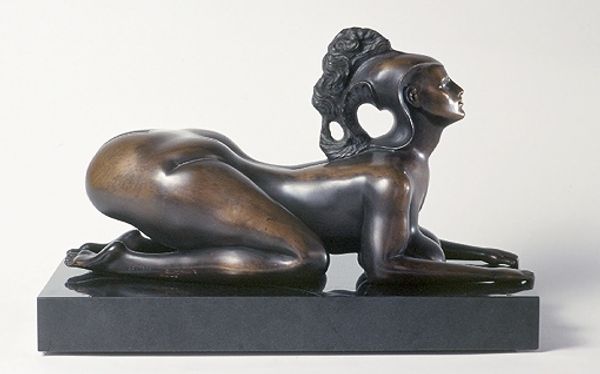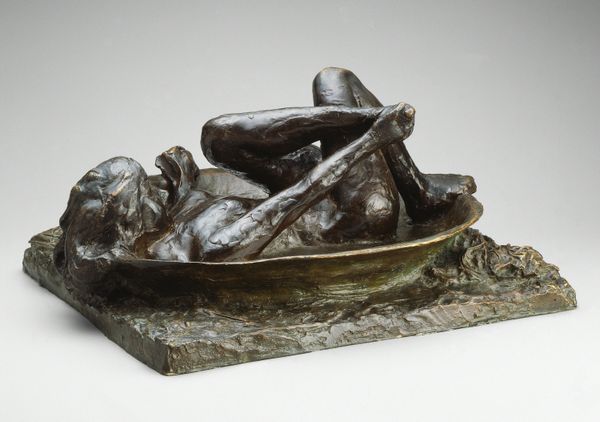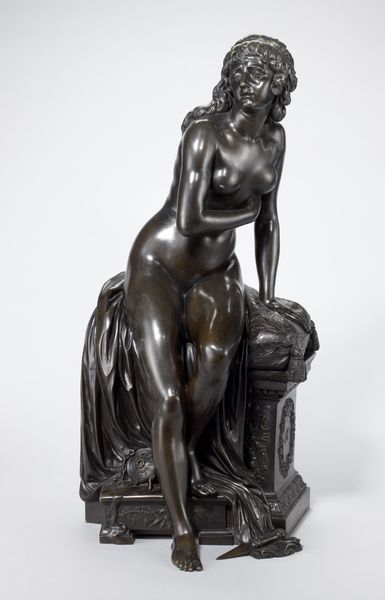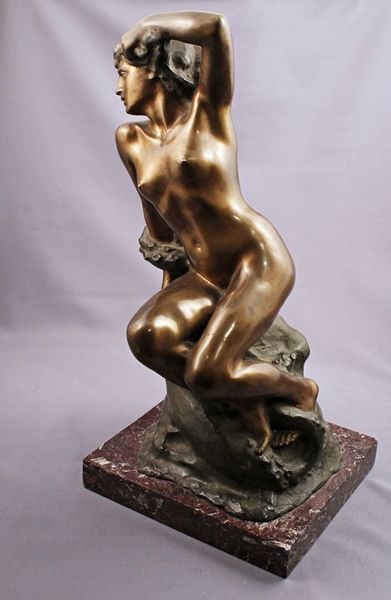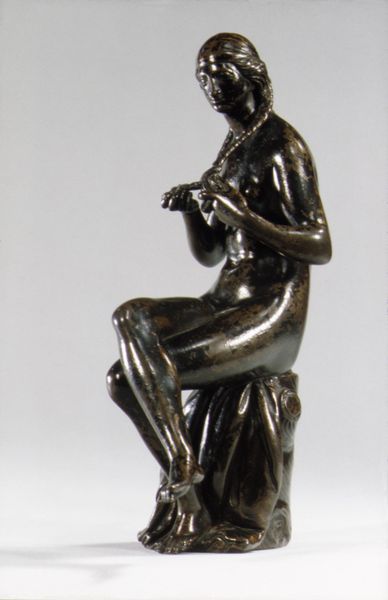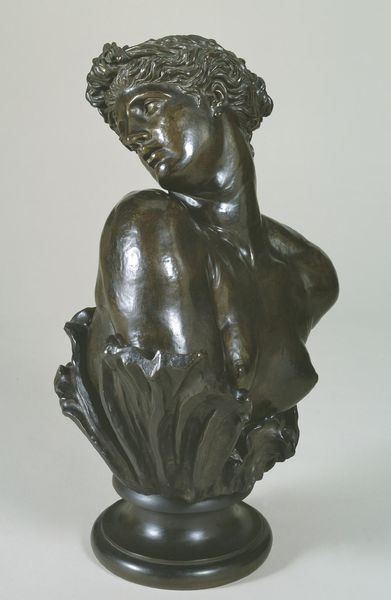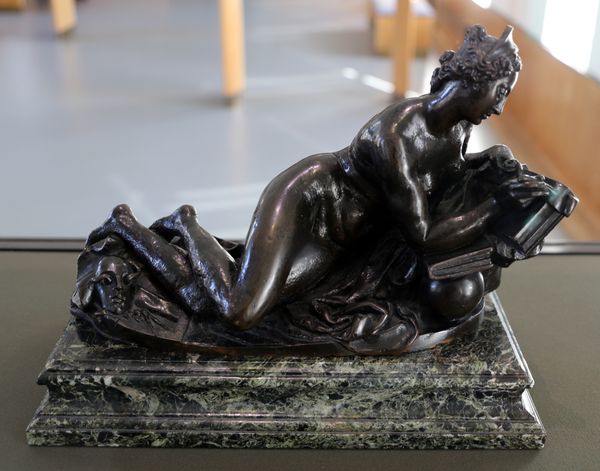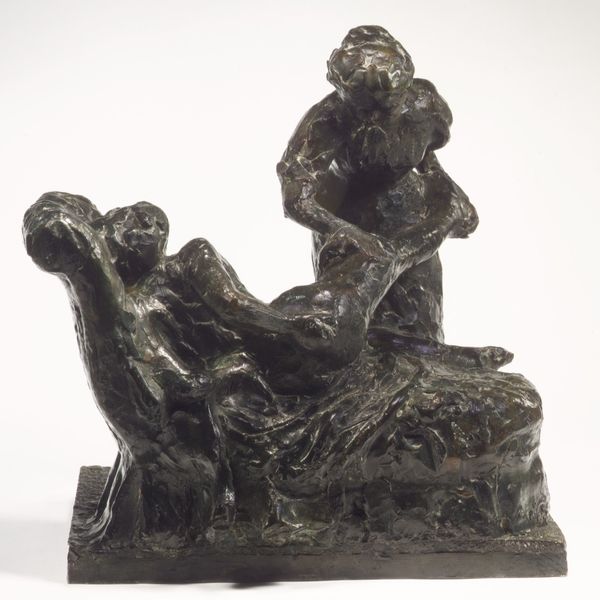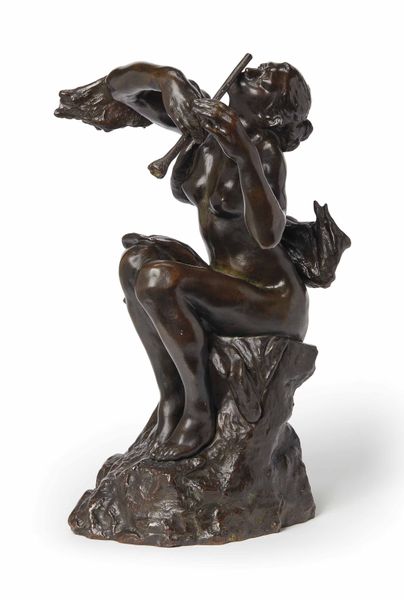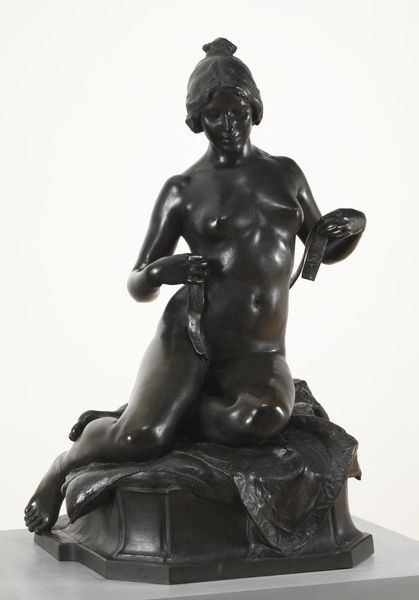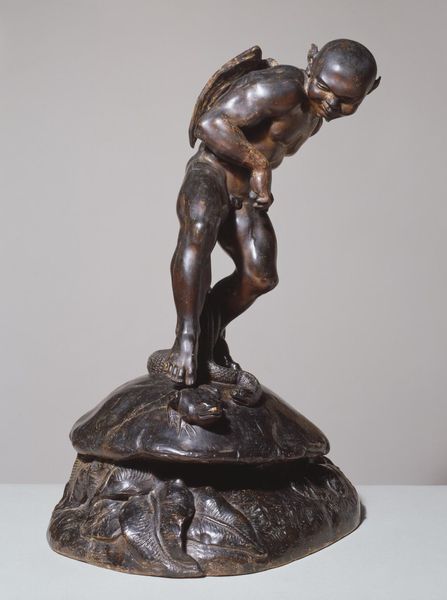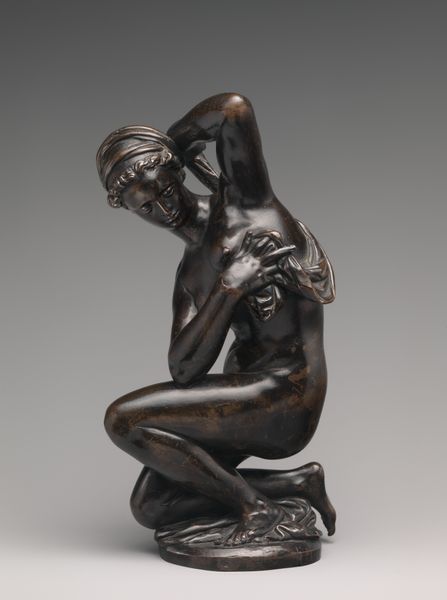
bronze, sculpture
#
statue
#
negative space
#
sculpture
#
bronze
#
mannerism
#
sculptural image
#
figuration
#
sculpture
#
nude
Copyright: Public domain
Giambologna made this bronze sculpture, Ninfa Dormiente, sometime in the late 16th century. It represents a sleeping nymph, a mythological spirit of nature, reclining in languid repose. In Renaissance Italy, classical themes provided a means for artists to explore ideas about beauty, desire, and the relationship between humanity and the natural world. Giambologna worked in Florence under the patronage of the Medici family, who used art to legitimize their power. The image is sensuous, showing us a female nude. Although the explicit sexuality might seem shocking, we must remember that this was made for a small circle of wealthy elites. During the Renaissance, nude figures became a display of humanist principles, and they were only commissioned by patrons who would understand the themes from classical mythology. The study of Giambologna and his circle allows us to understand Renaissance society better and to reflect on the role of art in expressing social values. Researching the archives of the Medici court, as well as the literature of classical mythology, helps us understand how this art can reflect the culture of its time.
Comments
No comments
Be the first to comment and join the conversation on the ultimate creative platform.
